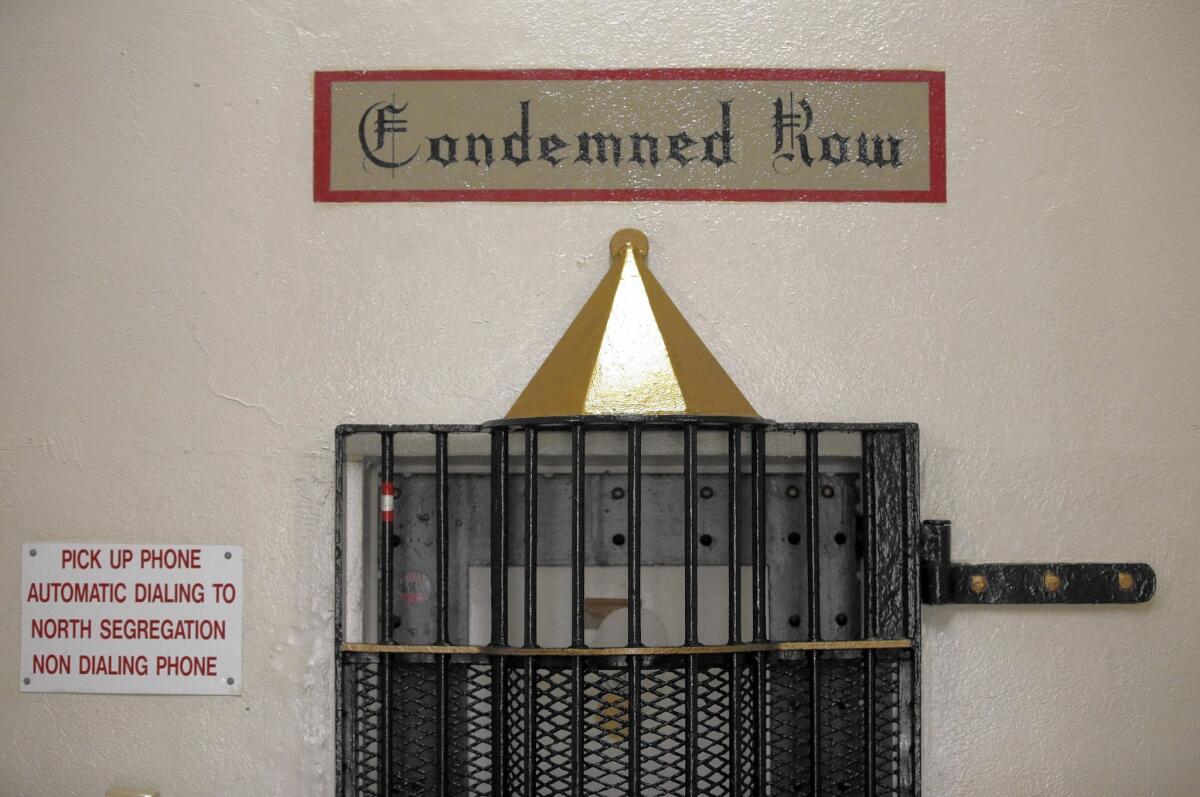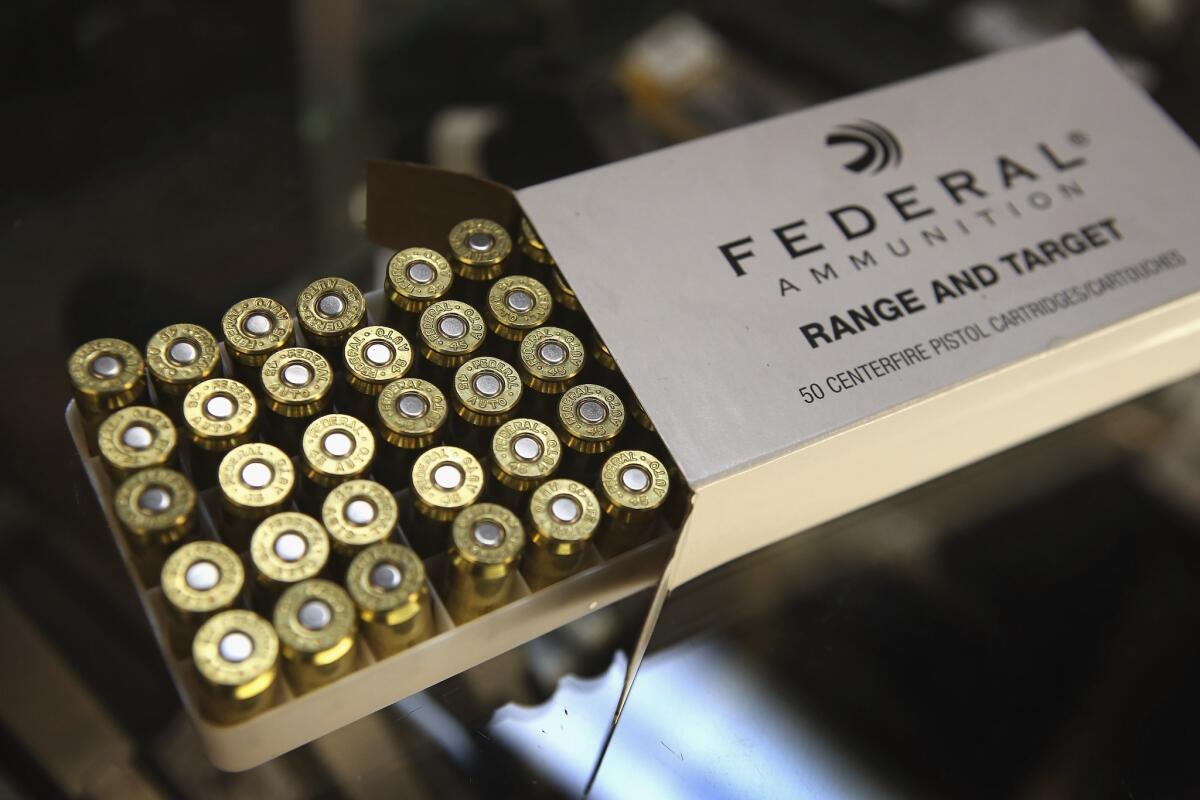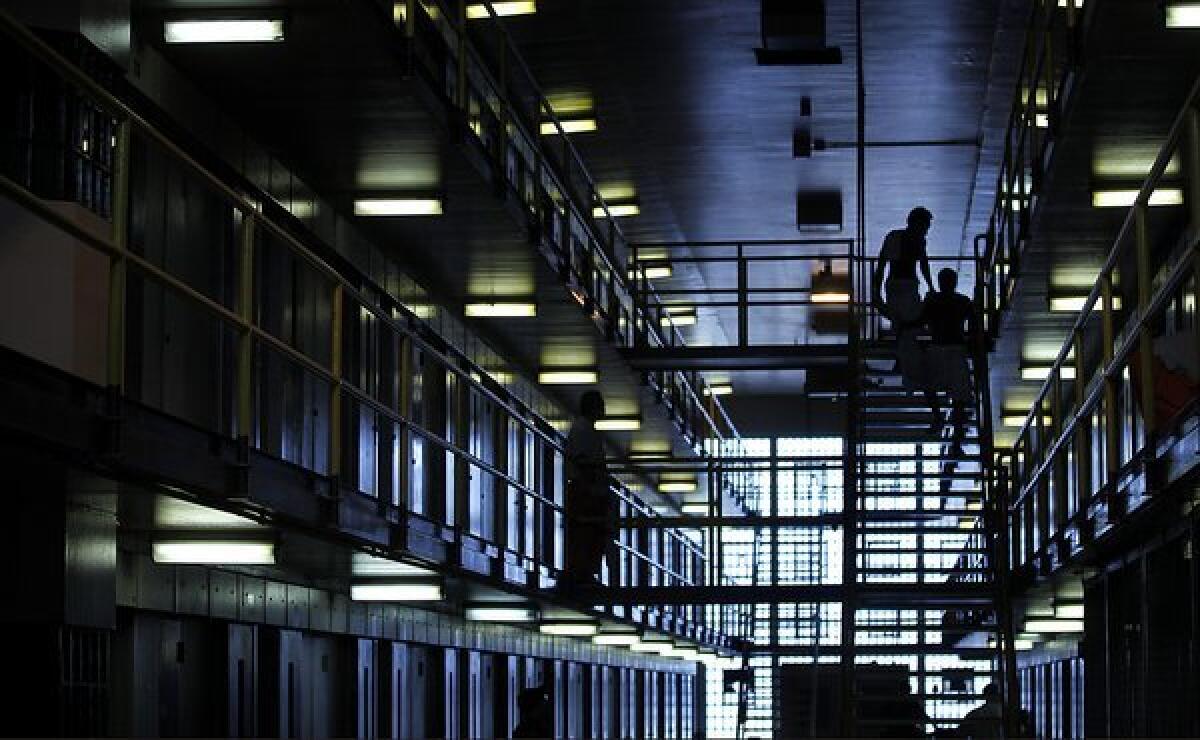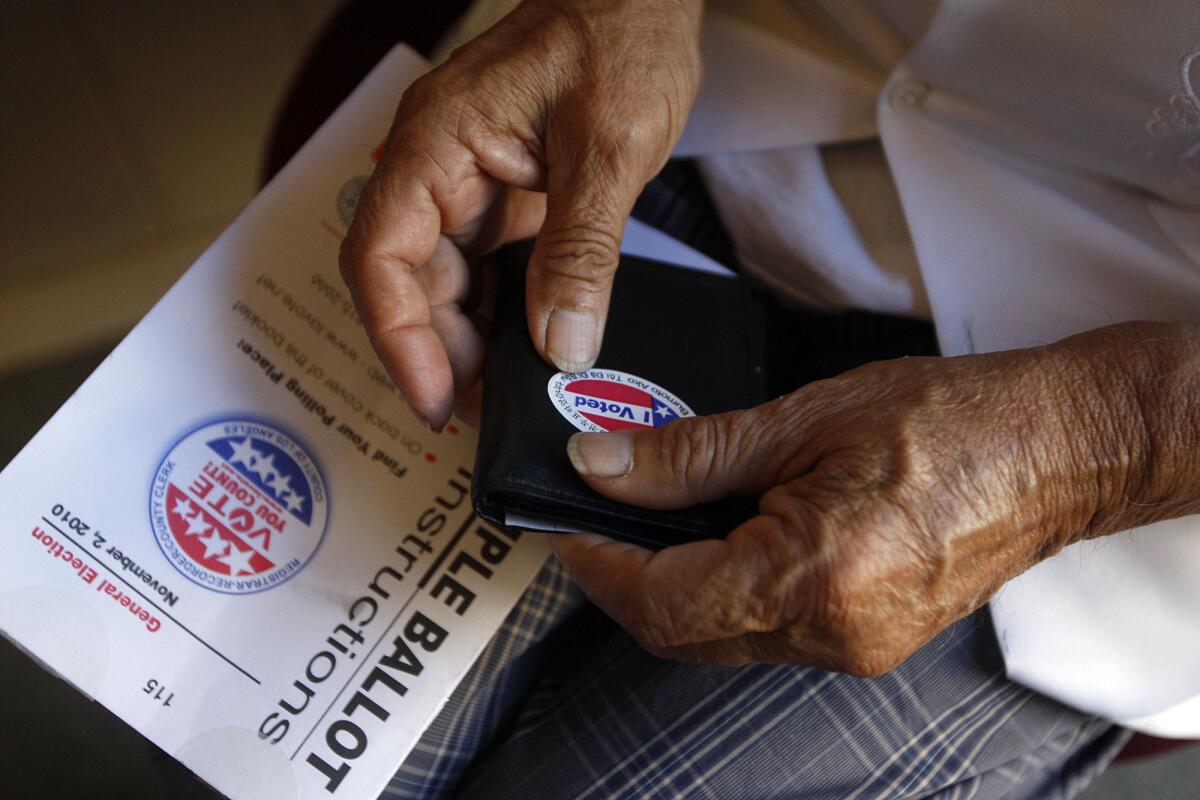What you need to know about the 17 propositions on November’s statewide ballot
- Share via
California voters will be asked on Nov. 8 to sort through the longest list of statewide propositions since the PlayStation 2 was on the market and the St. Louis Rams won the Super Bowl.
The list of 17 ballot measures certified by Secretary of State Alex Padilla on Thursday offers a dizzying array of public policy choices for Californians to sort out this fall.
You ballot box guide to the 17 propositions »
Here’s a look at the issues you’ll be hearing more about, from news coverage to multimillion dollar TV ad campaigns, in just a few months.
Proposition 64: Legalization of marijuana

This initiative likely will be one of the most talked about measures on the November ballot. While voters approved the use of marijuana for medical needs in 1996, they rejected a full legalization of the drug in 2010.
The proposal: Marijuana and hemp would be legal under state law, though still illegal in the eyes of the federal government. Sales would be limited to those over the age of 21. State taxes would be collected from buyers, and local taxes would be allowed. Most of the tax revenues would go toward law enforcement and marijuana education programs.
Who’s behind it: Lt. Gov. Gavin Newsom and Sean Parker, the creator of Napster and former Facebook president.
Death penalty: Repeal it or speed it up?

Two death penalty measures will appear on the fall ballot, making this a historic showdown over the future of capital punishment.
Repeal the death penalty: Proposition 62 would repeal the 1978 law that imposes execution for the most heinous crimes. If passed, death row sentences would be changed to life without parole. The measure also would send more money earned for prison work to victim restitution efforts. Voters rejected a similar effort in 2012.
Who’s behind it: Mike Farrell, best known for his role as B.J. Honeycutt on the TV series “M*A*S*H,” is the official proponent and a longtime death penalty critic.
Speed up the death penalty: On the flip side, Proposition 66 would seek to accelerate the death penalty’s legal process by setting new time limits on the review of convictions by the courts. It would require death row inmates to work and pay victim restitution.
Who’s behind it: Former NFL player Kermit Alexander’s mother, sister and two nephews were murdered in their Los Angeles home in 1984. The gunman remains on death row, and Alexander is the official proponent of this initiative.
Extended income tax rates on the wealthy; higher tobacco taxes
Tax proposals are always controversial in California, and this fall, voters will have the chance to impose billions of dollars of taxes on two groups: the wealthy and smokers.
Extend current high-income earner tax rates: Proposition 55 would add 12 years to the life of income tax rates imposed by Proposition 30, the 2012 measure championed by Gov. Jerry Brown.
Those rates, a 1% to 3% surtax on incomes above $250,000 a year, would stay in place through 2030 under this measure. The money would be spent on California schools and government healthcare programs, which likely would free up existing tax dollars for other state government programs.
Who’s behind it: The initiative is being championed by a coalition led by the California Teachers Assn., the state council of the Service Employees International Union, the California Hospitals Assn. and the California Medical Assn.
Raise the tobacco tax by an extra $2 per pack: Four years after voters rejected a tobacco tax increase, supporters of boosting the levy are back again. Proposition 56 would raise taxes on tobacco and electronic cigarette products containing nicotine. The money would be used on healthcare and tobacco-control programs.
Who’s behind it: In addition to anti-smoking groups, this measure counts billionaire Democratic activist Tom Steyer as a key backer.
Gun violence: Regulations on ammunition

The events of 2016 have supercharged the public debate about gun control and the effectiveness of both the laws on the books and new ones. This initiative is likely to be one of the most discussed of the fall campaign season.
The proposal: Proposition 63 would ban the sale and possession of large-capacity ammunition magazines in California. It also would impose background checks for purchasing ammunition, new felony charges for gun thefts and rules for keeping guns out of the hands of felons and others disqualified from possessing firearms. In some cases, the initiative would replicate some of the new gun laws signed by Gov. Jerry Brown last week. In others, advocates say it would go much further.
Who’s behind it: Lt. Gov. Gavin Newsom is the official proponent. He is gearing up for a major campaign that could boost his visibility in advance of the 2018 race for governor.
The bag industry stretches its battle to two initiatives

Two ballot measures are the result of a bitter 2014 battle in the state Capitol over an effort to impose a statewide ban on single-use plastic bags. While scores of local communities already have a ban, this political fight covers all of California.
Plastic bag referendum: Proposition 67 is a ballot referendum, a chance for voters to either uphold or overturn the law signed by Gov. Jerry Brown in 2014 to impose a statewide plastic bag ban. Voters who choose “yes” will be ratifying that law.
Who’s behind it: The plastic bag industry immediately filed the referendum after the bag ban was signed into law.
Redirecting the money from bag fees: The plastic bag industry is also the sponsor of an initiative, Proposition 65, that would require that any fees charged for paper or reusable bags be earmarked for environmental programs. As part of the law that banned single-use bags, those fees can be kept by retailers.
Bonds for schools, new voter approval on bonds

Two decisions about bonds — the borrowing of money for government projects, paid back over time — face California voters on Nov. 8.
School bond: Proposition 51 would borrow $9 billion in school bonds. The money would be used for both construction and modernization projects at K-12 schools and community colleges. Funds from previous statewide school bonds already have fully been allocated.
Who’s behind it: School board officials, business groups and builders gathered voter signatures after lawmakers and Gov. Jerry Brown failed to reach an agreement on a proposal.
More bonds would need voter approval: Another initiative on the fall ballot, Proposition 53, seeks to force future statewide votes on any revenue bond that’s bigger than $2 billion for government projects. Revenue bonds are repaid by revenue that the project generates — like water facilities. Unlike general obligation bonds, they do not require voter approval.
Who’s behind it: Water is, in fact, what sparked this initiative. A wealthy Stockton farmer funded the effort to qualify this measure, and hopes to force a future election on the financing for Brown’s ambitious Sacramento-San Joaquin River Delta water project.
Health issues: Prescription drugs, adult film stars, Medi-Cal funding

Voters will face three very different proposals on healthcare issues, with one of the measures likely to spark a multimillion-dollar opposition campaign.
Prescription drug pricing: Proposition 61 would ban state agencies from paying more for a prescription drug than the lowest price the U.S. Department of Veterans Affairs pays for that same drug. The initiative, according to an analysis by the independent Legislative Analyst’s Office, says the new “price ceiling” would apply when the state is the purchaser and when state agencies are the final source of the payment. The pharmaceutical industry already has put close to $50 million into a campaign account to oppose the measure.
Who’s behind it: Michael Weinstein, the president of the AIDS Healthcare Foundation, is the proponent of the initiative.
Adult film star protections: Weinstein is also the proponent of an initiative that would require performers in adult films to use condoms during explicit sex scenes, Proposition 60. Penalties could be imposed on movie producers for violations of the law.
Medi-Cal funding initiative: Proposition 52, a health-related initiative promoted by the California Hospitals Assn., was born out of state budget deals during deficit-plagued years. It would make it harder for the Legislature to divert funds that are otherwise supposed to be spent on the Medi-Cal program.
Prop 57: Gov. Jerry Brown’s quest to overhaul prison parole

For Gov. Jerry Brown, Proposition 57 is an effort to, in part, undo what he helped create almost four decades ago: a system where prison sentences became less flexible and helped fuel the largest inmate population in the nation.
The proposal: More prisoners serving time for a nonviolent crime could become eligible for early release based on their effort to earn credits for education and good behavior while behind bars. The initiative also would eliminate the existing law that can send a juvenile offender immediately to an adult court hearing.

Legislature asks voters to weigh bilingual education, Supreme Court ruling on campaign money
Two measures have been placed on the November ballot by the Legislature.
Repealing the ban on bilingual education: Proposition 58 would remove a key provision of the ban on bilingual education passed by California voters in 1998 as Proposition 227. Instead of a general ban on teaching language-learning children only in English, this ballot measure would allow county offices of education and school districts to make the final decision.
Citizens United advisory measure: Lawmakers also have placed Proposition 59 on the fall ballot that asks voters whether they want California officials to work toward a repeal of the Citizens United campaign finance ruling by the U.S. Supreme Court. That ruling opened the door to unlimited spending on federal campaigns by corporations and unions, and could be overturned only by an amendment to the U.S. Constitution. Given the very high hurdle for any constitutional amendment, this ballot measure is largely a way for California voters to express their opinion on money in politics.
------------
FOR THE RECORD
July 6, 12:50 p.m.: An earlier version of this article said a ballot initiative to curtail bilingual education was approved by California voters in 1994. It was approved by voters in 1998.
Legislature’s rules: More public review of bills

Proposition 54 seeks a change in the way lawmakers pass bills in Sacramento and would largely abolish the practice of last-minute amendments that then get quickly sent to a governor or signed into law.
The proposal: Legislation would have to be online for public review at least three days before a final vote. The governor, by declaring an emergency, could exempt a bill from this mandate. The ballot measure also would expand the amount of live video required of legislative action at the state Capitol, and it would allow that video to be used in political campaigns.
Who’s behind it: The initiative was written by two influential Republicans: former state Sen. Sam Blakeslee and wealthy GOP donor Charles Munger Jr.
Follow @johnmyers on Twitter, sign up for our daily Essential Politics newsletter and listen to the weekly California Politics Podcast
ALSO
17 propositions have earned a spot on November’s ballot
The November election could see $500 million in spending on statewide propositions
Updates on California politics
UPDATES:
Oct. 17, 12:45 p.m.: This article was updated with the ballot proposition numbers.
This article was originally published at 12:05 a.m. on July 3, 2016.
Get the L.A. Times Politics newsletter
Deeply reported insights into legislation, politics and policy from Sacramento, Washington and beyond. In your inbox three times per week.
You may occasionally receive promotional content from the Los Angeles Times.







